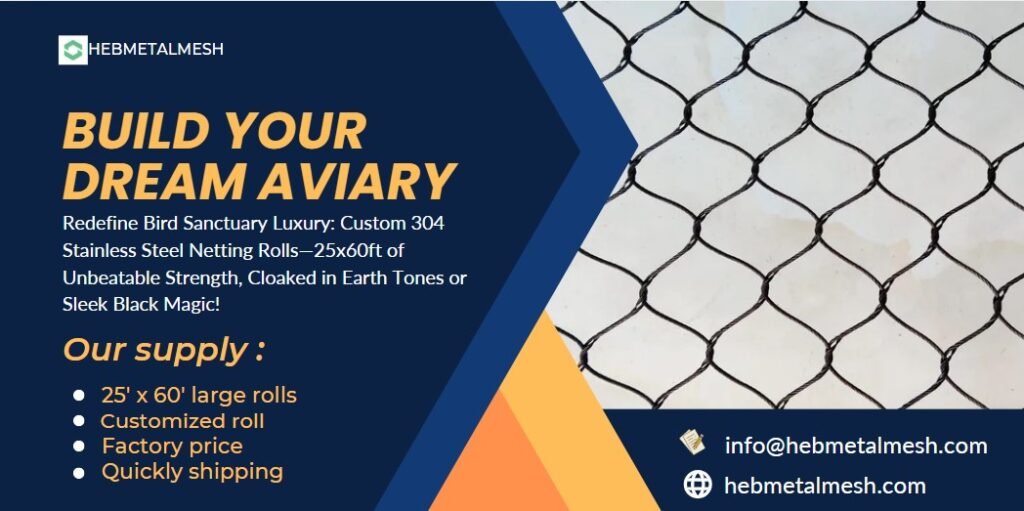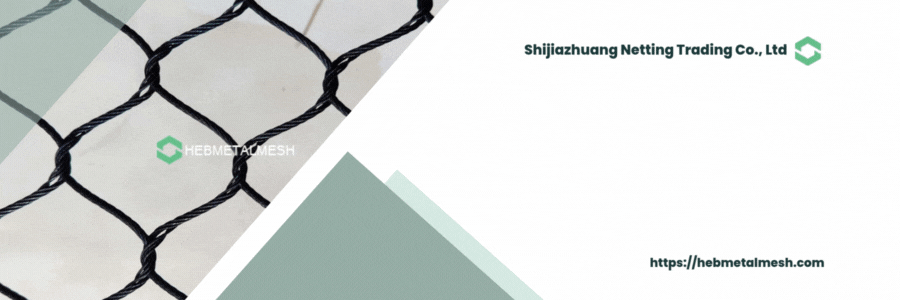Introduction: Embracing the Aviary Experience
In an era where urbanization often disconnects us from nature, building a DIY bird aviary offers a remarkable opportunity to reconnect with the avian wonders of the world. This venture not only provides a safe haven for birds but also enhances our living environment, bringing lively colors, melodious songs, and the joy of observing these creatures in their naturalistic habitat. By creating an aviary, enthusiasts can cultivate a sanctuary that mirrors the birds’ natural environment, enabling them to thrive while enhancing our personal spaces.
Investing time and resources into building a DIY bird aviary is a rewarding endeavor that yields numerous benefits. First and foremost, it serves as a secure environment where birds can exercise, socialize, and display their innate behaviors. Well-constructed enclosures allow for a variety of species to coexist harmoniously, encouraging breeding and nurturing behaviors that are vital for their well-being. The pleasure derived from watching birds flit from perch to perch and engage in playful antics is an unmatched experience that enriches daily life.
Moreover, a DIY bird aviary can transform into a beautiful feature in your garden or home. With careful planning and consideration for aesthetics, one can create a visually appealing structure that complements the surrounding landscape. The integration of plants, natural provides, and carefully chosen décor can make the aviary not just a home for birds, but a stunning focal point in your outdoor space that invites admiration and tranquility.
As we journey through this ultimate guide, you will discover essential steps and tips to construct your very own bird aviary. The possibilities are vast, from selecting your favorite avian companions to determining appropriate materials. With the right foundation, you can create an environment that allows both the birds and yourself to thrive in an enriching, beautiful coexistence.
Choosing the Perfect Location for Your Aviary
When embarking on the journey of constructing a DIY bird aviary, one of the most critical aspects to consider is the selection of the perfect location. The ambiance and environment in which your aviary is placed not only affects the aesthetics of your garden but also plays a crucial role in the well-being of your birds. A well-chosen location can ensure that your feathered companions thrive, feeling secure and comfortable in their surroundings.
Sunlight is an essential factor when positioning your aviary. Birds require exposure to natural light for their overall health, as it aids in the synthesis of Vitamin D which is invaluable for calcium absorption. Ideally, the aviary should receive direct sunlight for part of the day while also providing shaded areas so that birds can escape from the heat during peak sun hours. This balance will help create a pleasant microclimate inside the aviary.
Equally important is shelter from wind and rain. Choosing a spot that offers natural barriers, such as shrubs or trees, can protect your aviary from harsh weather conditions. Windbreaks not only improve the comfort of your birds but can also enhance the structural longevity of your DIY bird aviary. Additionally, the proximity to your home is worth considering; positioning your aviary within easy view allows for regular monitoring of the birds and creates a lovely focal point in your garden.
Lastly, safety from predators such as cats, hawks, and other local wildlife is paramount. Evaluate your garden space carefully, ensuring it offers enough security to protect your birds from potential threats. By considering these factors—sunlight, shelter, proximity, and safety—you will enhance the livability for your birds and create a captivating ornamental feature within your garden.
Essential Materials for Building a Bird Aviary

When embarking on a DIY bird aviary project, selecting the right materials is crucial for the safety and well-being of its inhabitants. The structure must be durable and secure while also complementing the aesthetic of your garden or outdoor space. One of the primary materials to consider is handwoven stainless steel mesh, specifically stainless steel 304. This type of mesh has gained popularity due to its unique blend of benefits, making it ideal for creating a bird-friendly environment.
Stainless steel 304 mesh stands out for its exceptional durability, providing a strong barrier that can withstand various weather conditions. Unlike traditional wire mesh, stainless steel does not rust or corrode, ensuring a long-lasting solution for your aviary. This resistance to the elements is particularly important as it helps maintain the structural integrity of the bird aviary over the years, reducing the need for frequent repairs or replacements.
Moreover, safety should be a top priority when building your aviary. Handwoven stainless steel mesh adds an extra layer of security, as its tight weave prevents birds from escaping while ensuring that potential predators cannot reach them. This peace of mind is invaluable for bird enthusiasts who wish to provide a safe haven for their feathered friends.
In addition to functionality, aesthetics also play a role in choosing materials. Stainless steel 304 mesh is available in various color finishes, including a natural look or a sleek black oxide finish. These options allow you to customize your DIY bird aviary to harmonize with your surrounding landscape, enhancing its overall appeal. Other essential materials may include framing materials, such as wood or aluminum, which can be chosen based on personal preference and budget. Overall, it is important to prioritize quality and safety in every component of your aviary design.
Step-By-Step Guide to Building Your Aviary Frame
Constructing a sturdy frame is the backbone of your DIY bird aviary project. A robust frame not only provides safety for your birds but also stability for the entire structure. Begin by gathering necessary tools and materials, which include high-quality wood or metal for the frame, screws, brackets, a tape measure, a level, and a saw for cutting materials to size. Depending on your preference and the size of your aviary, select durable materials that can withstand outdoor conditions.
The first step involves establishing the dimensions of your aviary. Decide how spacious you want the aviary to be, taking into consideration the species of birds you intend to house, as different birds have varying space needs. Once you finalize the dimensions, begin measuring and cutting your frame components, ensuring each piece is uniform and fits snugly. Usually, a rectangular or square shape is ideal for stability, while larger aviaries benefit from additional cross-bracing.
With your pieces cut, it’s time to assemble your frame. Start by laying out the base on a level surface, utilizing a level to ensure accuracy. Attach the corners using brackets for extra support, and then secure each joint with screws. Pay close attention to the integrity of your connections; they must be tight to withstand environmental elements and the weight of the materials and wiring that will follow. As you build upwards, continuously check for square and level alignment. Adding vertical supports at regular intervals will bolster the frame’s durability.
Once you have completed your frame, inspect it for any sharp edges or protrusions that might harm the birds. Sand down rough spots and, if desired, apply a protective finish to enhance longevity. This foundational step not only promises safety but also sets the stage for the rest of your DIY bird aviary project, leading to a successful and enjoyable building experience.
Installing the Stainless Steel Mesh: A Craft of Precision
When constructing a DIY bird aviary, the selection and installation of the stainless steel mesh are pivotal to ensuring the safety and comfort of its feathered inhabitants. The mesh acts as a barrier, providing security from predators while ensuring adequate ventilation and visibility. Therefore, precision in installation is essential. Begin by measuring the dimensions of your aviary frame accurately, allowing for slight bends or overlaps in the mesh. This will facilitate a snug fit, critical for both aesthetics and security.
After measuring, cut the stainless steel mesh according to the dimensions, taking care to wear protective gloves. This step minimizes risks of injury while handling sharp edges. When positioning the mesh, start from one corner and firmly attach it to the frame using either clamps or screws designed specifically for metal fastening. This approach not only keeps the mesh taut, thereby preventing sagging, but also enhances the overall look of the aviary.
To achieve the best results, it is advisable to work with a helper. Coordination between two individuals can help hold the mesh in place while securing it, ensuring an effective and efficient installation process. Once installed, double-check the fixtures to guarantee that there are no loose sections through which birds might escape or outside threats could enter. Keep in mind that high-quality stainless steel mesh not only offers durability but also presents a refined appearance, contributing to the aesthetic charm of your DIY bird aviary. Regular maintenance checks will also ensure the integrity of the mesh, prolonging the longevity of your aviary and providing a safe haven for your birds.
Designing a Bird-Friendly Interior: Enrichment and Comfort
Creating a cozy and stimulating interior for your DIY bird aviary is essential for the well-being of your feathered friends. This process involves careful consideration of various elements, including perches, nesting areas, and toys, to ensure that the environment mimics their natural habitat while remaining aesthetically pleasing to observers. Having the right features will not only promote physical comfort but also encourage natural behaviors among the birds.
Perches are fundamental components of any bird aviary. Different species have unique preferences regarding perch sizes, shapes, and materials. When designing your aviary, it is advisable to include perches made from various natural woods, as they provide varied textures and surfaces that benefit foot health. Additionally, incorporating branches with different diameters can help stimulate the birds’ foot muscles, ensuring they remain active and engaged. Strategically placing the perches at varying heights will create an attractive and dynamic layout within your DIY bird aviary, enabling birds to explore and interact with their environment more effectively.
Nesting areas are another crucial aspect of a bird-friendly interior. Depending on the species you are housing, consider installing nesting boxes or platforms that allow ample space for breeding and rearing chicks. These should be situated in quiet corners of the aviary, facilitating privacy while integrating well with the overall design. It’s important to ensure that nesting materials, such as twigs, grasses, and feathers, are available for the birds to utilize while building their nests, thereby promoting natural instincts and behaviors.
Lastly, toys and enrichment items play a vital role in keeping birds mentally stimulated. When selecting toys, choose those that are safe and designed specifically for the type of birds housed in your aviary. Regularly rotating these items can provide ongoing stimulation, ensuring that the birds remain curious and engaged. By focusing on these essential elements, you can craft an enriching and comfortable environment within your DIY bird aviary, ultimately enhancing the lives of your avian companions.
Landscaping Around Your Aviary: Blending Nature and Structure
Creating a harmonious environment around your DIY bird aviary is essential not only for aesthetic appealing but also for enhancing the overall well-being of its inhabitants. Thoughtful landscaping can transform your aviary from a simple structure into a captivating habitat that further immerses your birds in a naturalized setting. By meticulously planning the space surrounding your aviary, you can elevate the experience for both the birds and your enjoyment of the area.
Incorporating a variety of plants, particularly those native to your region, is a great starting point. Native plants are more likely to thrive and can provide essential food and shelter for local bird species. Consider selecting shrubs that offer berries or seeds, as well as flowering plants that attract pollinators. Placing these plants around the aviary not only beautifies the environment but also fosters a sense of a larger ecosystem that supports your birds.
Pathways leading to the aviary can further enhance its accessibility and complement the landscaped surroundings. Using natural materials like gravel, mulch, or flagstones can create a subtle yet attractive route. These pathways encourage guests to approach the aviary, which can lead to an enhanced viewing experience, allowing observers to appreciate the birds up close without disturbing their habitat.
Decorative elements, such as garden sculptures, water features, or bird baths, can also add character to the landscaping. A small fountain or pond nearby can provide a soothing auditory backdrop while enhancing biodiversity by attracting additional wildlife. Integrating these features not only increases the visual appeal but can also promote a healthy ecosystem that benefits your DIY bird aviary.
Through strategic landscaping, you can effectively create a seamless blend between nature and the structural design of your aviary, ensuring it is not only a functional space for the birds but an exquisite addition to your outdoor living area.
Maintenance Tips for a Long-lasting Aviary
To maintain a DIY bird aviary in optimal condition, regular upkeep is essential. Cleaning the enclosure not only ensures a hygienic environment for the birds but also enhances the aviary’s overall aesthetics. Begin by establishing a routine cleaning schedule, ideally on a weekly basis, where droppings, uneaten food, and debris are removed promptly. Using a mild, non-toxic detergent mixed with warm water is effective for scrubbing surfaces. Ensure that all cleaning agents are safe for birds, to prevent any potential harm.
In addition to cleaning, conducting periodic inspections of the aviary is crucial. Look for signs of wear and tear, particularly on the stainless steel mesh, as it can be prone to developing rust if improperly maintained. Regular checks should include examining the structural integrity of the frame and ensuring that all components, such as perches and feeders, are securely anchored. Any damaged areas should be repaired immediately to prevent accidents or escapes.
Maintaining the materials used in the aviary construction is equally important. Stainless steel mesh, commonly chosen for its durability, can last for years if cared for properly. To maintain its integrity, avoid using abrasive cleaners that could scratch the surface and lead to corrosion. Instead, use a soft cloth or sponge for cleaning. Additionally, consider applying a protective coating or sealant specifically designed for outdoor metals to enhance longevity against the elements.
Lastly, keep the surroundings of the aviary in check. Ensure that the area is free from invasive plants that can cause damage to the structure or attract pests. Regular maintenance of your DIY bird aviary leads to a safer, healthier environment for your feathered friends while ensuring that their home remains visually appealing for many years.
Frequently Asked Questions About DIY Bird Aviaries
Creating a DIY bird aviary may seem like a daunting task, and potential builders naturally have numerous inquiries about the process. Below are some frequently asked questions that address common concerns and misconceptions regarding the establishment and maintenance of a bird aviary.
When choosing bird species for your aviary, it is essential to consider compatibility, size, and behavior. Popular choices include finches, canaries, parakeets, and cockatiels. These species typically thrive in a communal environment that an aviary provides. However, be cautious; some birds may be aggressive or territorial. Researching the specific needs and social behaviors of potential species is crucial, particularly in a DIY bird aviary.
Space is a critical aspect of planning your DIY aviary. The general rule is to provide at least two cubic feet of space per small bird and considerably more for larger species. An aviary should allow for ample flying space, perches, and nesting areas. Additionally, indoor versus outdoor aviaries will have different space requirements based on environmental factors. Creating a layout that provides sufficient room for flight, social interaction, and enrichment opportunities will enhance the wellbeing of the birds.
Like any home for pets, a DIY bird aviary may encounter various challenges. Common issues include pests, diseases, and stress among birds. Regular inspection and maintenance are vital for preventing such occurrences. Implementing thorough cleaning routines, providing proper nutrition, and ensuring adequate ventilation can mitigate many of these concerns. Additionally, being proactive by learning about potential stressors, such as overcrowding or environmental changes, will lead to a healthier aviary habitat.
Having these questions answered can empower bird enthusiasts in their journey to create a thriving DIY bird aviary. Fostering a safe, spacious, and enriching environment for our feathered friends is both rewarding and fulfilling.



